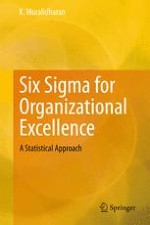2015 | OriginalPaper | Buchkapitel
13. Continuous Improvement
verfasst von : K. Muralidharan
Erschienen in: Six Sigma for Organizational Excellence
Verlag: Springer India
Aktivieren Sie unsere intelligente Suche, um passende Fachinhalte oder Patente zu finden.
Wählen Sie Textabschnitte aus um mit Künstlicher Intelligenz passenden Patente zu finden. powered by
Markieren Sie Textabschnitte, um KI-gestützt weitere passende Inhalte zu finden. powered by
